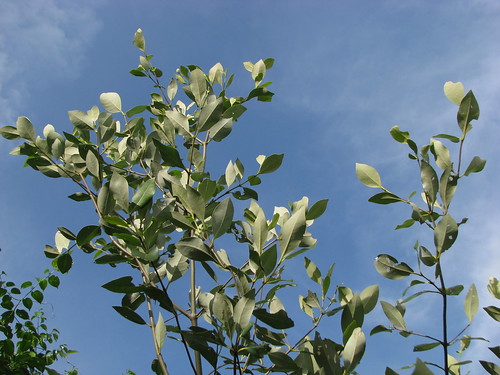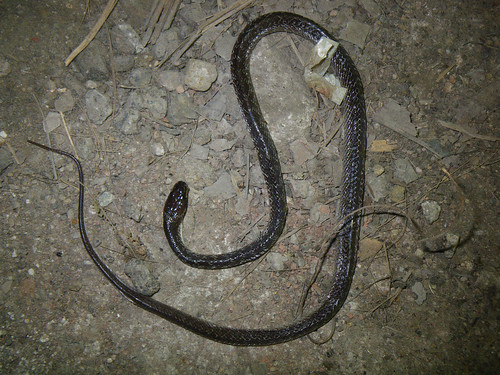
In order to reach there, I had ride along TPE and went underneath the bridge. It was pretty eerie exploring alone and also seemed like an ideal place for illegal immigrants to hide in.

Lots of Tamil scribings at the bridge. There were also a lot of wasp nests overhanging from here. >Update: They are Thai instead of Tamil.

There was a juvenile Malayan water monitor lizard (Varanus salvator) swimming in the river. These lizards can be found at all sorts of water ways, even at canals and beaches.
Peeping down in the water, I can see barnacles extending out their hairy legs to feed. From the video, it was interesting to see that they can actually move their legs around to "grab" and filter food in different directions. Besides these crustaceans, there were also some tubes whereby worm like animals were snaking out from. I wonder what are those?

This is the part where I was itching to explore. A small stretch of mangrove just at the doorstep of Seng Kang housing estate. Some construction work were ongoing but it seemed that they are not going to clear the mangroves but just the land after that.

Avicennia alba or Api-Api Putih is the most common plant here. It can be easily identified by the tapering leaves and white underside.

There were also lots of climbers, Clerodendron inerme and all of them were fruiting.

Here was another climber, the sea derris (Derris trifoliata). The sap contains toxin which is used as a fish poison and can be destroyed through cooking.

Buta-buta (Excoecaria agallocha) or blind your eyes is another plant which has poisonous sap that can blind one's eyes. Excess salt absorbed from the seawater can actually be transported to old leaves which are shed periodically.

The only fern species found in a mangrove habitat are the mangrove ferns. This is Acrostichum aureum and the fertile fronds containing the spores are spread all over the leaves at the end, thus appearing brownish.

Katydids (Family: Tettigoniidae) are closely related to grasshopper, thus also earning the common name; long horned grasshopper. This was sitting on another api api, A. rumphiana.

This little snail is called a perwinkle, Littoraria sp. Did it made those holes on the leaves?

Besides herbivores, I also managed to find a predator. A praying mantis (Order: Mantodea) nymph was waiting patiently on the leaf waiting for a careless prey to stumble by it.

One more interesting discovering was this fresh carcass. I wonder what species of snake this was... Update: Thanks to Ivan for the ID, this snake is a house wolf snake (Lycodon capucinus).
I would have like to carry on walking to the end of the mangrove but unfortunately, I was not dressed appropriately for this trip (in singlet and sandels). After getting cut by the sharp barnacles, I decided to head back. Did not manage to see a variety of species here but I did not explore much and it seemed more diverse at the opposite bank. Have to find a better route to come here though! It was pretty terrifying to cycle on an expressway~

3 comments:
Those aren't Tamil words, they're Thai. Why don't you go to Sungei Punggol instead? It's easier to access and more beautiful. I'm go to Sungei Punggol or Punggol Reservoir often to fish.
Which part of Punggol River do u go to? One reason I go to Serangoon River is because it is just opposite my house :)
The dead snake is a house wolf snake (Lycodon capucinus).
http://ecologyasia.com/verts/snakes/common_house-snake.htm
Post a Comment